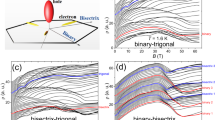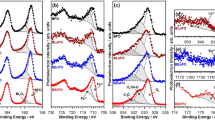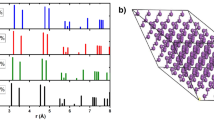Abstract
BISMUTH when electrically or mechanically colloidalised shows a fall in its diamagnetic susceptibility value.1 Doubts were raised by Prof. Bhatnagar as to whether this fall in value could not be due to oxidation.2 It was shown by me3 that though a large part of this value was certainly due to oxidation, still there was a decrease in value which could be explained only by attributing it to reduced particle size, as in the case of graphite.
This is a preview of subscription content, access via your institution
Access options
Subscribe to this journal
Receive 51 print issues and online access
$199.00 per year
only $3.90 per issue
Buy this article
- Purchase on Springer Link
- Instant access to full article PDF
Prices may be subject to local taxes which are calculated during checkout
Similar content being viewed by others
References
Ind. J. Phys. 5, 559; 1930.
Ind. Chem. Sac., 7, 975; 1930.
Ind. J. Phys., 6, 241; 1931.
Author information
Authors and Affiliations
Rights and permissions
About this article
Cite this article
RAMACHANDRA RAO, S. Anomalous Diamaǵnetism of Bismuth. Nature 129, 545–546 (1932). https://doi.org/10.1038/129545d0
Issue Date:
DOI: https://doi.org/10.1038/129545d0
Comments
By submitting a comment you agree to abide by our Terms and Community Guidelines. If you find something abusive or that does not comply with our terms or guidelines please flag it as inappropriate.



